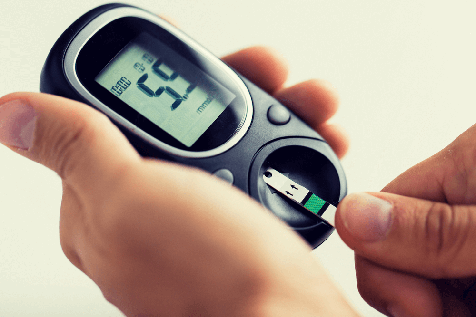Most nutritionists recommend low glycemic index(GI) fruits. Indeed, a healthy diet should almost always include fruit. This is especially true if you have adrenal fatigue or diabetes. This article helps you find the best low GI fruits suitable for your health and blood sugar.
What is the glycemic index?

The glycemic index is a numerical unit that tells you how quickly foods containing carbs affect your blood glucose when consumed alone. Indeed, it represents how "sweet" the food is. The glycemic index uses a scale of 0 to 100. A food with a high glycemic index will cause a significant increase in blood glucose. Whereas a food with a glycemic index that is lower will not have much impact.
The GI scores are scored as follows: Low GI: 55 or less, moderate GI: 56 to 69, high GI: 70 and more.
In general, dried fruit, like many processed foods have a higher GI. A high glycemic index food increases blood glucose more than a medium or low glycemic index food. This is why it is essential, especially for diabetics, choose medium or low glycemic index foods than those with a high glycemic index.
12 low glycemic index fruits (low GI fruits)
Find out why we selected these 12 low GI or low glycemic index fruits!
Cherries (GI=20)
Cherries are full of antioxidants that strengthen theimmune system. They are thus very rich in potassium. Because cherries have a short growing season, it can be difficult to get them fresh. However, canned tart cherries, which hasa glycemic index of 41, are still a great substitute as long as they are not packed in sugar.
Dried apricots (GI=32)
Dried apricots are a great alternative when eaten in small amounts. Indeed, dried fruits tend to provide more quantity of carbohydrates. They contain a quarter of the daily requirement of copper and are rich in vitamin A and E. You can eat them with salads or cereals like couscous.
Pears (GI=30)
Pearscontain vitamins C and Kas well as potassium calcium magnesium and vitamin B6... Instead of cutting it up, eat the whole pear with the skin for extra fiber. This will provide you with 20% of your recommended daily fibre intake.
Apples (GI=39)
In addition to offering a satisfying taste, there's a reason whyapples are popular in "slimming diets" especially thanks to its low GI. Moreover, one single medium-sized apple provides about 20% of your daily fiber requirement. These help to make you feelfull longer, to make lower blood sugar levels. Fiber thus improves the functioning of the digestive system. Also, apples have an excellent source of vitamin C.
Oranges (GI= 40)
Oranges contain fiber, potassium, and vitamin C, all of which improve heart health. In addition, they contain more than 170 different phytochemicals and over 60 flavonoids. These compounds have anti-inflammatory and antioxidant properties.
Plums (GI=40)
Plums encompass considerable amounts of vitamins A, C and K. Thus, they contain good sources of potassium, copper and manganese and are rich in antioxidants.
Strawberries (GI= 41)
Strawberriescontain particularly high levels of antioxidantsknown as polyphenols. These help the body to fight diseases. These antioxidantsalso increase insulin sensitivity and slow the rate at which the body digests and absorbs sugar. Strawberries are also rich in potassium, folic acid, fiber and vitamin C. In fact, although most people associate vitamin C with citrus fruits, 155 grams of strawberries contain more vitamin C than an orange.
Peaches (GI= 42)
Peachescontain plenty ofvitamins C and A as well as potassium and iron. Potassium helps regulate heart rate and reduce blood pressure. Iron helps carry oxygen to the lungs and throughout the body. They make a great addition to smoothies, whether blended with blueberries or mango!
Mangoes (GI= 51)
In addition to being quite low in calories and very high in fiber, mangoes are an excellent source of vitamin A, B6 and C. They also contain smaller amounts of calcium, zinc and iron.
Bananas (GI= 51)
Bananas are one of the most consumed fruits in the world, and for many reasons. It's an easy-to-grab snack that's rich in fiber, potassium, vitamins A and C and magnesium. It is also believed that bananas can reduce blood pressure and the risk ofcancer and asthma.
Grapes (GI= 53)
Grapes provide healthy fiber. In addition, they contain a good source of vitamin B6 which improvesbrain function and mood hormones.
The cantaloupes (GI=54)

Cantaloupes are an excellent source of vitamins C and A. Vitamin A improves the health of your eyes.They also contain a multitude of B vitamins including B1, B3, B6 and folate. They are also good sources of vitamin K, potassium and magnesium.
Low Glycemic Index diet: a good idea?
Sources:
https://docteurbonnebouffe.com/meilleurs-fruits-index-glycemique-bas/https://www.passeportsante.net/fr/Actualites/Dossiers/DossierComplexe.aspx?doc=mincir-index-glycemique-index-glycemique-des-fruits-difficile-de-s-y-retrouver



